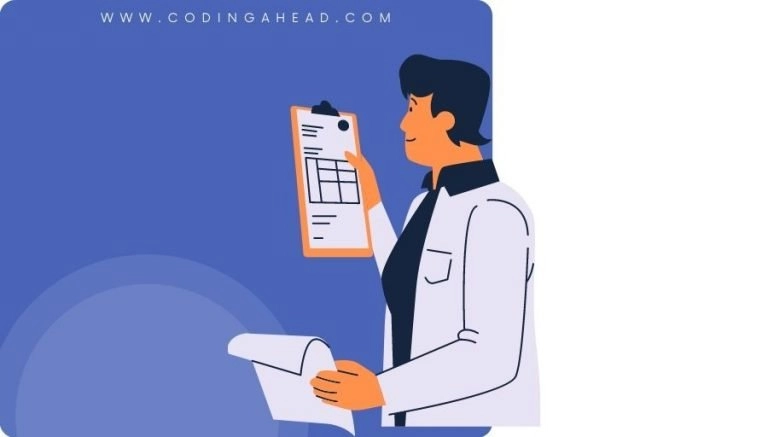How To Use CPT Code 42975
CPT 42975 is a diagnostic procedure used to evaluate sleep-disordered breathing by examining the velum, pharynx, tongue base, and larynx. This article will cover the description, procedure, qualifying circumstances, appropriate usage, documentation requirements, billing guidelines, historical information, similar codes, and examples of CPT 42975.
1. What is CPT 42975?
CPT 42975 is a diagnostic procedure performed by a healthcare provider to evaluate sleep-disordered breathing, such as obstructive sleep apnea, by examining the patient’s airway using a flexible endoscope. The procedure involves assessing the velum, pharynx, tongue base, and larynx to determine the cause of airway obstruction and identify the most effective treatment options.
2. 42975 CPT code description
The official description of CPT code 42975 is: “Drug-induced sleep endoscopy, with dynamic evaluation of velum, pharynx, tongue base, and larynx for evaluation of sleep-disordered breathing, flexible, diagnostic.”
3. Procedure
The 42975 procedure involves the following steps:
- The patient is sedated and put to sleep.
- The provider inserts a flexible endoscope into the patient’s airway, typically through one side of the nose.
- The provider evaluates the velum, pharynx, tongue base, and larynx to identify the cause of airway obstruction.
- The provider documents the findings and removes the endoscope to complete the procedure.
4. Qualifying circumstances
Patients eligible to receive CPT code 42975 services are those who have been diagnosed with sleep-disordered breathing, such as obstructive sleep apnea, and require further evaluation to determine the cause of airway obstruction. The procedure is typically performed when conservative treatments, such as continuous positive airway pressure (CPAP) therapy, have been unsuccessful or are not suitable for the patient.
5. When to use CPT code 42975
It is appropriate to bill the 42975 CPT code when a healthcare provider performs a drug-induced sleep endoscopy to evaluate a patient’s sleep-disordered breathing and identify the cause of airway obstruction. The procedure should be performed when other diagnostic methods have been inconclusive or when conservative treatments have not been effective.
6. Documentation requirements
To support a claim for CPT 42975, the following information should be documented:
- Patient’s medical history, including diagnosis of sleep-disordered breathing and previous treatments.
- Indication for the procedure, such as failure of conservative treatments or inconclusive diagnostic tests.
- Details of the sedation and anesthesia used during the procedure.
- A step-by-step description of the procedure, including the insertion of the endoscope and evaluation of the airway structures.
- Findings from the procedure, including the location and severity of airway obstruction.
- Recommendations for further treatment or intervention based on the findings.
7. Billing guidelines
When billing for CPT code 42975, it is important to follow the appropriate guidelines and rules. Do not report CPT 42975 in conjunction with CPT codes 31231, 31575, or 92511, unless performed for a separate condition and using a separate endoscope. Ensure that all documentation requirements are met to support the claim and avoid potential denials or audits.
8. Historical information
CPT 42975 was added to the Current Procedural Terminology system on January 1, 2022. There have been no updates to the code since its addition.
9. Similar codes to CPT 42975
Five similar codes to CPT 42975 and how they differentiate are:
- CPT 31231: This code is for a diagnostic nasal endoscopy, which focuses on the examination of the nasal cavity rather than the airway structures related to sleep-disordered breathing.
- CPT 31575: This code is for a diagnostic laryngoscopy, which examines the larynx only and does not include the evaluation of the velum, pharynx, or tongue base.
- CPT 92511: This code is for a diagnostic nasopharyngoscopy, which evaluates the nasopharynx and does not include the dynamic evaluation of the airway structures during drug-induced sleep.
- CPT 31622: This code is for a diagnostic bronchoscopy, which examines the bronchial tree and is not focused on sleep-disordered breathing.
- CPT 92502: This code is for an otolaryngologic examination under general anesthesia, which is a broader examination of the ear, nose, and throat structures and does not specifically evaluate sleep-disordered breathing.
10. Examples
Here are 10 detailed examples of CPT code 42975 procedures:
- A patient with a history of obstructive sleep apnea who has failed CPAP therapy undergoes a drug-induced sleep endoscopy to evaluate the cause of airway obstruction.
- A patient with sleep-disordered breathing and inconclusive diagnostic tests undergoes CPT 42975 to determine the most appropriate treatment options.
- A patient with a history of snoring and daytime sleepiness undergoes CPT 42975 to evaluate the severity and location of airway obstruction during sleep.
- A patient with obesity and sleep-disordered breathing undergoes CPT 42975 to assess the impact of weight on airway obstruction and identify potential treatment options.
- A patient with a history of upper airway resistance syndrome undergoes CPT 42975 to evaluate the cause of airway obstruction and determine the most effective treatment options.
- A patient with a history of sleep-disordered breathing and craniofacial abnormalities undergoes CPT 42975 to assess the impact of the abnormalities on airway obstruction.
- A patient with a history of sleep-disordered breathing and a large tongue base undergoes CPT 42975 to evaluate the contribution of the tongue base to airway obstruction.
- A patient with a history of sleep-disordered breathing and a high-arched palate undergoes CPT 42975 to assess the impact of the palate on airway obstruction during sleep.
- A patient with a history of sleep-disordered breathing and a deviated septum undergoes CPT 42975 to evaluate the impact of the septum on airway obstruction and identify potential treatment options.
- A patient with a history of sleep-disordered breathing and a history of tonsillectomy undergoes CPT 42975 to assess the impact of the surgery on airway obstruction and identify potential treatment options.


